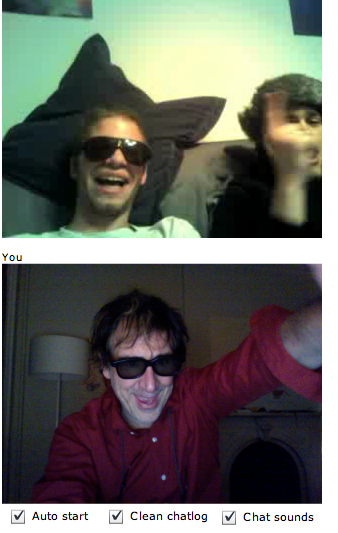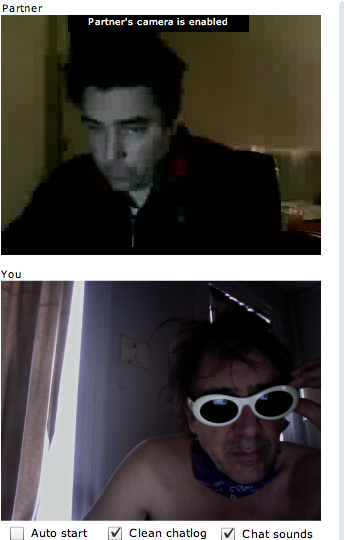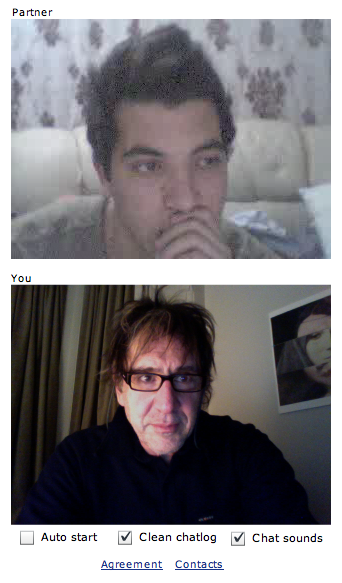this moment already always recording
In these works I explore public platforms for communication and social networks through an aesthetic and conceptual lens. Perhaps all media today is social and is the long played out and realized desire and claim put forward by Nicolas Bourriaud's in relational aesthetics, "a set of artistic practices which take as their theoretical and practical point of departure the whole of human relations and their social context, rather than an independent and private space."
Social Media not only presents us with a new kind of public space, it presents what was once a spectacle, where the dividing line between performers and the audience was very clear, with new modes of going, new modes of discourse, of writing and image making, where traditional representations are contested, becoming an intertwinning of roles of acts being performed and the consumption of that performance.
As Neshant Shah writes, 'In today's networked and social media the performers and the audience are the same people. Representations become self representations, they become actions, they become the ever articulation of a 'this moment'. Social media has turned what were once very private actions–sitting in front of a computer, writing and journaling–into actions that are immediately public.' As such they produce and constitute both a new public, and a reconsideration of our media, our cities and spaces, our archives, of how we use, read and see representation - which is no doubt today always and already performative.
But going forward, these actions, this performative which in this first phase had been ends to themselves, now demand and question, to what end - in other words putting on the now, putting on the media, putting on the institution, situating it, making it visible, even for a moment asks something else of us. In the following works using social media as a context and medium such questions are put forward, As artworks they address questions as to the act of photography, what is and where is performance space, public space, institutional space. It presents portraiture photography as imaging the photographer and the subject at the same time. Performance as relational performance.
Self-portraits can be extraordinarily telling, and no more so then perhaps the initial period of Myspace explored in a print and book series called Self Exposures, a collection of portraits of self-presentation including image and text. As Jordan Crandall has written, 'The drive to willingly display the self constitutes a shift in the dynamic of the game that was that perhaps once constituted by a surrender to a ‘controlling gaze’. For within these presentational environments, performance and role-playing reign supreme, and new forms of subjectivity and identity emerge. These new cultures of self-display challenge us to rethink foundational concepts in film and media theory and, consequently, to rethink the very conditions of our approach.'
If the Myspace portraits of Self-Exposure are emblematic of sharing and erotic display, of a “pose” that functions as an attractor, in the Chatroulette print series, This Moment, the audience who once took vicarious pleasures out of these representations performed by others, often the manifestation of their own desires, now actively explore and enact their desires and abjections with others. These others no longer at a remove, but beckoning as exchange, each encounter demanding a response, and the production of any and all possible relations.
As critic Daniel Coffeen has written about the work, This Moment presents the dangerous, silly, boring, outrageous, and beautiful, they represent an in between — in between the ads and banners, in between the demands of capital, in between you and me.
As McLuhan writes, we cling to the horse and buggy even as the railway pounds by. Old concepts still define our social network behavior. We want to know where our interlocutors live, how old they are, their gender, education, their likes and dislikes. In this work I document my encounters on Chatroulette.com to introduce new architectures of the social encounter, encounters no longer tethered by the familiar anchors of place, class, clique, place in the sexual hierarchy, or financial transaction. Here the network is moving so fast that is has sloughed its old skin and its capitalist baggage, leaving us exposed and naked with our desires: What do you want from others? This moment —because it is a moment and not a narrative— untethers us from the old networks of nation, class, job, psychographic associations. This is the encounter not mediated by capital or the same old metaphors of identity. There is no meta-explanation. It is at once a collective and an isolated moment, a private experience within the collective network. This is a society of individual moments, a network of fragmented selves that nonetheless are not fragmented.'
In Situating Facebook, a collaboration with social media artist An Xioa, An and I take up not posting but conversation in the commons about the commons. Here we situated or occupied the space to hold a protracted conversation on Facebook discussing such things as Tanka and Twitter not simply as messages between two people, but messages for everyone to see, poems were tiny messages for a courtly audience to demonstrate one’s intellectual prowess. In the 21st century, @replies and tweets are tiny messages for the public forum of social media, often to show wit or political savvy. 'And so I think of Twitter and Facebook conversations as a new type of public space, the 21st century edition of the Heian court, the Greek agora, the Roman forum', writes An to me as we go on to discuss the effectiveness of situatedness in the these new commons.
In, Well Done Kids, What Now?" a twitter narrative, (nd what is twitter but the antithesis of narrative) the posts of Penny Red are used to put forward and highlight a new kind of reportage, a new narrative.
This Moment (some further notes below and an essay on participation and Rethinking the conventions of participation, which are today somewhat orthodox here)
Certain thoughts come to mine both about cinema and photographic practice in the realm of our networked condition.
Film makers and photographers have given us access, insight and images from places and peoples we had not seen (scene). they brought to us worlds only they could access, often very intimate worlds, they narrativized both these worlds and at times self-critically their own intervention of recording.
The suburbs, subcultures, all kinds of groups, peoples and places from all over the world and with them stories and situations where brought to us through photography and film.
In the one to one, to anyone, video recording of chatroulette, one is put into any number of stories or encounters with people we may have seen in a todd soldanz film, a nan goldin or alex sloth photograph, the harold and kumar films, the sacha baron cohen films, these being road trip, documentary and performative films. these works are pre-recorded events, linear events whose narratives may be open, but whose events are 'closed'.
The always on camera, both as an event to present oneself and to encounter any possible image or representation of others in the chatroulette open network - takes us to this place of always already recorded, always to be recorded - and so what is it to make an image, still or moving, when one always is or has a camera. if we live within cinema and cinema does not stand outside us, what is it to always be recorded. of course cinema and photography is not simply recording, but intent and arrangement of recordings and the recording event.
But if cinema once gave us narrative closure and photography remove and intimacy of and from a distant, an event, the always on, both to see and be seen, networked video gives us this realm in which we are always on in cinema and photography. these are prosthetic ways of seeing and performing ourselves. but not just seeing but encountering, discovering and always, while seeing being seen.
The photographs document this encounter, this condition of being image, being seen while seeing, of in a sense, living inside cinema and photography, inside recording.

























































































































































































































































